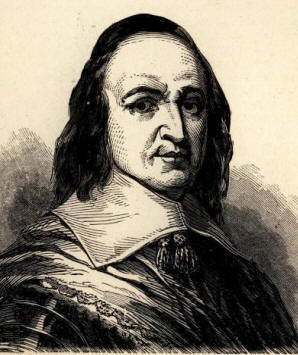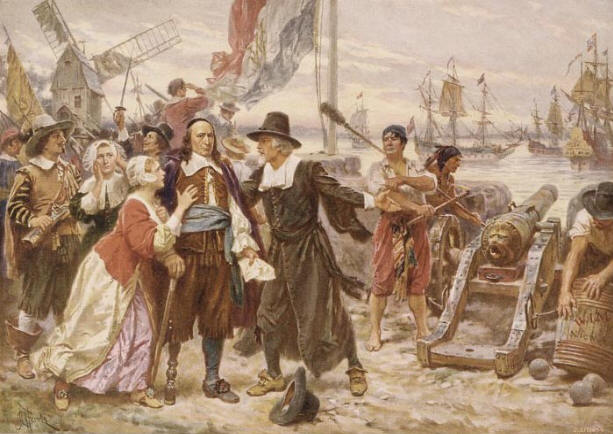Peter Stuyvesant
|
|
This Site:
|
Stuyvesant was an honest despot, and acted wisely. He set about needed reforms with great vigor, and into the community he infused much of his own energy. Enterprise took the place of indifference. He soon regulated the troubles between the Dutch on Manhattan and the Swedes on the Delaware (see NEW SWEDEN), made arrangements for adjusting difficulties with the Puritans in the East, and pacified the surrounding tribes of natives. In 1650 he arranged, at Hartford, the boundary in dispute between the English and Dutch possessions. Finding the finances of the province in a wretched condition, he perceived that taxation would be necessary, so he summoned representatives of the people to meet at New Amsterdam to provide for it. This germ of popular rule he tried to smother, but in vain, and there were angry controversies between the governor and the people during nearly the whole of his administration. A fort built by the Dutch on the Delaware in 1651 was captured by the Swedes in 1654. This caused Stuyvesant to lead an expedition in person against the Swedes the next year, which resulted in the subjugation of New Sweden. In 1653 a convention of two deputies from each village in New Netherland demanded certain political rights for the people, and gave the governor to understand that they should act independently of him. He stormed and threatened, but to no purpose. The spirit of resistance increased. Disturbed by encroachments of the English on the east, he remonstrated, but in vain, and was compelled to yield to the pressure of changing circumstances around him. Finally, when an English military and naval force came from England to assert the claim of the Duke of York to New Netherland, and revolutionary movements occurred on Long Island, his troubles tried him most severely; but his fortitude and obstinacy never forsook him.
Colonists Begging Stuyvesant to Surrender to the BritishWhen Colonel Richard Nicolls appeared with four
ships-of-war and 450 soldiers operated by the government of that
nation in front of New Amsterdam (August, 1664) and demanded
the surrender of the province (Aug. 31), he found his alienated
people willing to submit to English rule. Yet he stoutly refused the
demand. Nicolls sent Governor Winthrop, of Connecticut, with a
letter to Stuyvesant, repeating his demand. He laid it before the
council, who said, " Read it to the people." Stuyvesant would not.
The council and magistrates insisted that he should, when the
enraged governor, who had fairly earned the title of " Peter the
Headstrong," unable to control his passion, tore the letter in
pieces. Stuyvesant held out for a week, but on Sept. 8 he yielded,
and the formal surrender took place. The governor went to Holland to
report to his superiors, in 1665, and, returning, spent the
remainder of his days on his bowery, or farm, on Manhattan Island,
bordering on the East River. He died in August, 1682. His remains
rest in St. Mark's church - yard, New York City. See
NEW NETHERLAND ; NEW YORK. |
|
|
||
|
|
Site Copyright 2003-2018 Son of the South. For Questions or comments about this collection, contact: paul@sonofthesouth.net |
|
|
Are you Scared and Confused? Read My Snake Story, a story of hope and encouragement, to help you face your fears. |
||
 Stuyvesant,
PETER, last Dutch governor of
Stuyvesant,
PETER, last Dutch governor of
